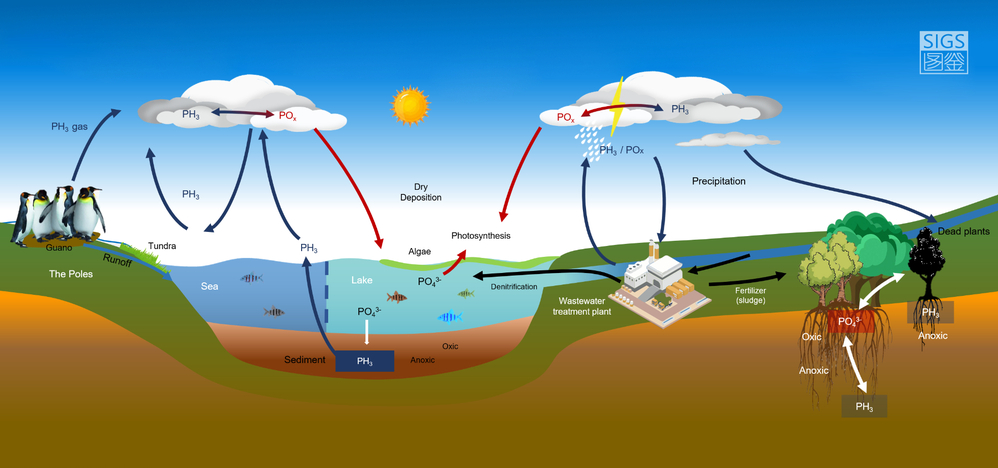
On December 7, Prof. Xihui Zhang and Dr. Wanyi Fu from Tsinghua-Berkeley Shenzhen Institute published a perspective paper titled “Global phosphorus dynamics in terms of phosphine” in the Nature Partner Journal, npj Climate and Atmospheric Science.
The paper was first to present perspectives on the whole dynamic cycle of phosphorus in terms of phosphine, elaborating on its interactions with natural ecosystems, impacts from human activities, and highlighted the important role of phosphine in regulating the global ecosystem.

As one of the critical elements on Earth, phosphorus, is cycling in the form of gaseous phosphine (PH3), and is involved in many ecological interactions. Since the detection of phosphine in wastewater treatment plants in 1988, an increasing number of investigations have revealed that phosphine exists universally in the natural environment.

Fig.1 Survey of the presence of free phosphine in the environment.
In living ecosystems, phosphorus usually exists as phosphate for use by natural plants or microbes. When the ecosystem declines and creates anaerobic conditions, phosphates will be reduced into phosphine. At certain temperatures and under lightning conditions, phosphine will be oxidized and would be transported into the atmosphere. They are then dissolved in clouds or rain, then re-enter into ecosystems.
This phosphorous cycle may be affected by various human activities. Large-scale hydraulic engineering projects may dramatically influence the phosphorus cycle and affect regional or even global climate change. It was reported that the Gobi Desert in northwestern China is gradually turning green, mainly due to the Three Gorges Reservoir. The project brings massive amounts of water vapor to the northwestern areas, possibly carrying phosphine, phosphorus oxides as well as plant seeds in the troposphere. Several studies have demonstrated that the Three Gorges Reservoir has affected the precipitation, drought, heat wave, local temperature, humidity and even induced extreme weather in reservoir regions.
Another grand hydraulic project under planning in China is the Hongqi River water transfer proposal. The 6,188 km-long Hongqi River will start from the southeastern Tibet Plateau, and plans to supply 60 billion m3 water per year to the northwestern inland of China. It can be expected that this project will also have a marked impact on the phosphorous cycle and ecosystem.

Fig 2. Diagram of the Hongqi River under planning. The red lines represent the Hongqi River and its tributaries.
Most importantly, the extensive recovery of phosphorus in urban wastewater treatment plants may seriously obstruct global phosphorous cycles in catching up with ecological needs of natural ecosystems. Modifying conventional wastewater treatment processes so that more phosphates can be transformed into phosphine will benefit the ecological cycle of phosphorus, and allow more phosphine to re-enter the atmospheric cycle and ecosystem. The use of new sewage treatment technology will not only reduce the amount of sludge produced, save post-treatment cost, but also involve wastewater treatment plants as an essential part of the global phosphorus cycle.
Link to full article:https://doi.org/10.1038/s41612-020-00154-7
Cover Design: Wanyi Fu
Writer: Wanyi Fu
Editor: Karen Lee


